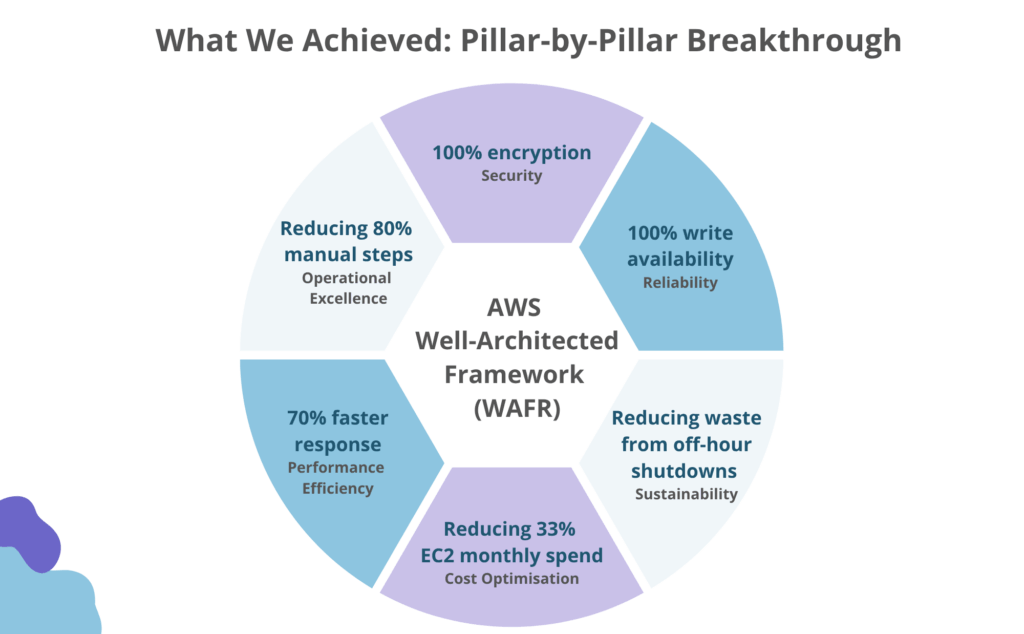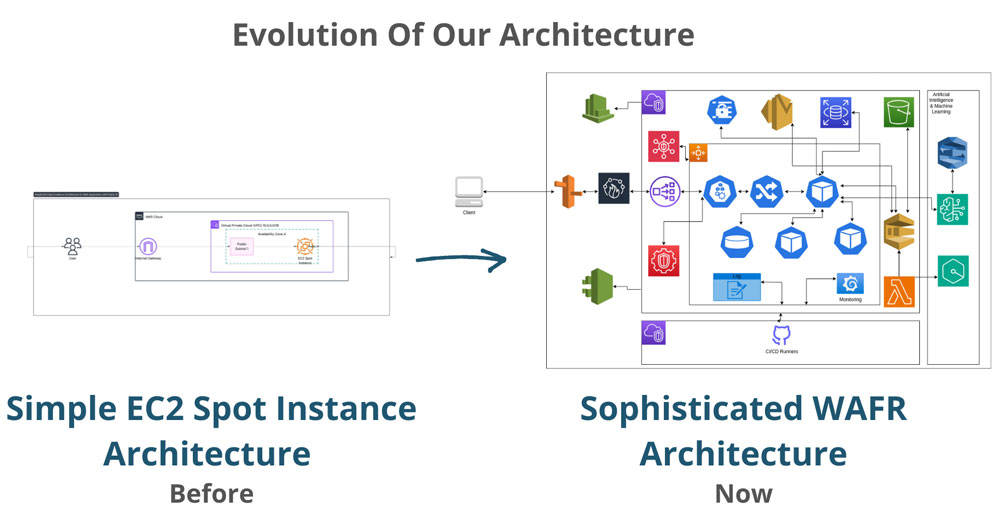
Building a robust and efficient online platform requires a strong technological backbone. At Diversity Atlas, we’ve recently taken our cloud infrastructure on an incredible journey, and our latest research, “Distributed Well-Architected Cloud Computing: The Evolution of Diversity Atlas Infrastructure” offers an overview of this transformation!
We started our evolution as a basic, single-server setup, transforming to multiple sophisticated cloud-native environments. By following the industry’s best practices, we’ve refined our cloud IT infrastructure to seamlessly handle global scale, complex diversity data, and diverse user needs.
The main challenge in this study was reasonably straightforward: How can a fast-growing platform systematically upgrade its underlying technology to ensure it’s always secure, reliable, cost-effective, high-performing, and environment-friendly? Let’s take a deep dive into how we achieved this.
Our Cloud Journey: From Simple Beginnings to Global Powerhouse
We started Diversity Atlas in 2017 with just one lonely server doing all our heavy lifting. This was fine when we got started, but as our platform rapidly grew in popularity and complexity, our technology needed a serious upgrade. We realised then that we couldn’t simply add more servers; we needed a complete transformation to handle it.
Today, we have been running in four distinct and interconnected environments across two continents. This wasn’t just about getting bigger; it’s also about committing to the best practices in cloud computing. To guide us through this massive evolution, we adopted the AWS Well-Architected Framework (WAFR), which provided us with six pillars to focus on:
- Operational Excellence: Running things smoothly and efficiently.
- Security: Keeping everything safe from threats.
- Reliability: Always available and quick to recover.
- Performance Efficiency: Fast and responsive for everyone.
- Cost Optimisation: Getting the best value for our IT investment.
- Sustainability (“Green cloud computing”): Reducing our environmental energy waste.

What Does Our Evolved Architecture Look Like?

In our current architecture, every component plays its part. Let’s picture Jane, a People & Culture Officer in Victoria, visiting the Diversity Atlas analytic platform to explore the demographic and cultural data collected from their survey:
- Managing Traffic: When Jane types “atlas.culturalinfusion.com/” into her browser, her request first hits a digital traffic controller (Amazon Route 53), which immediately knows the best and fastest path to send her request. It then passes through firewalls to make sure it’s a clean and standard request and not a malicious one. Then it works with an Elastic Load Balancer (ELB) to spread her request across many virtual servers. This system ensures no single server gets overwhelmed, efficiently distributing Jane’s request (and thousands of others!) to provide a quick response for all users.
- Distributed Computing: Jane’s request then arrives at our main services, which run on distributed cluster. This is a powerful system that manages and scales our platform across those virtual servers. As Jane browses the platform, cluster orchestrator ensures that the system quickly pulls out all the content she needs – from static company logos and downloadable reports stored in Amazon S3 storage to live data from Amazon RDS databases. It orchestrates how our applications interact with different storage types, ensuring Jane’s data access is fast and reliable.
- Behind-the-Scenes Tasks: If Jane decides to export a new diversity report, that request might go into a queue managed by Amazon SQS. This is like a post office for background tasks, ensuring big jobs are processed without slowing down her browsing experience, and keeping the whole platform running smoothly behind the scenes.
- Secure Networking: Throughout Jane’s entire visit, all her interactions happen securely within our Virtual Private Cloud (VPC). This is like our own private network within the larger internet. We use Security Groups and Network ACLs as “checkpoints” to control access to different parts of our system.
To continuously fine-tune this complex architecture, we use an AI-powered tool called the Well-Architected IaC Analyser to scan our system’s blueprints (Infrastructure as Code, aka IaC) to ensure they meet the best practices across all six pillars and help us constantly identify areas for improvement.
Why Should This Matter to Leaders?
This journey at Diversity Atlas demonstrates how investing in a well-architected cloud system directly translates into significant business advantages:
- Trust: Our focus on operational excellence and reliability means fewer frustrating outages and consistently fast performance for your customers. This builds immense trust and strengthens the brand reputation, ensuring your services are always ready and waiting whenever needed.
- Efficient Spending: Through cost optimisation and resource efficiency, your IT budget is spent wisely, ensuring you get maximum value and avoid wasteful expenditure.
- Agility and Innovation: A cloud infrastructure aligned with frameworks like WAFR builds a robust foundation that allows your teams to innovate faster, respond quickly to market changes or unexpected demands, and ensure your business is ready for whatever pops up next.
A strong, well-architected cloud is clearly a strategic asset that empowers your teams and drives long-term business success. To dive deeper into the evolution of our cloud infrastructure and the performance improvements we have gained, get the full paper below!